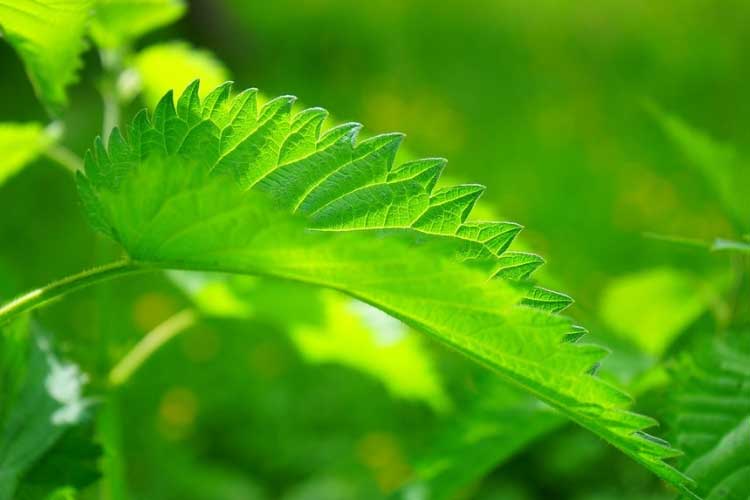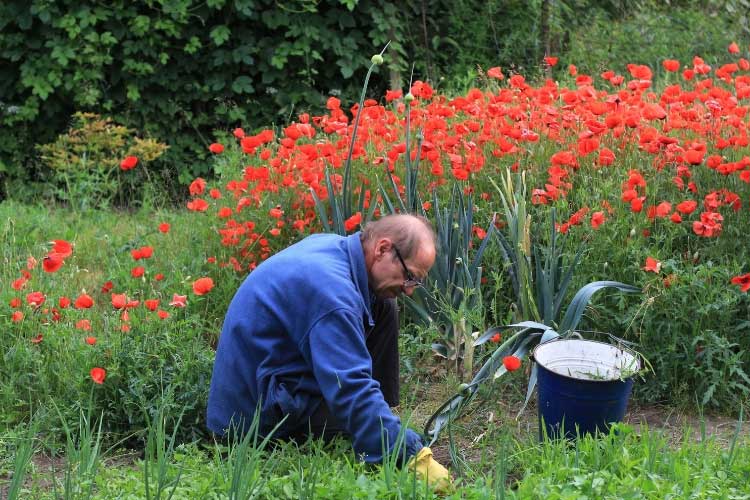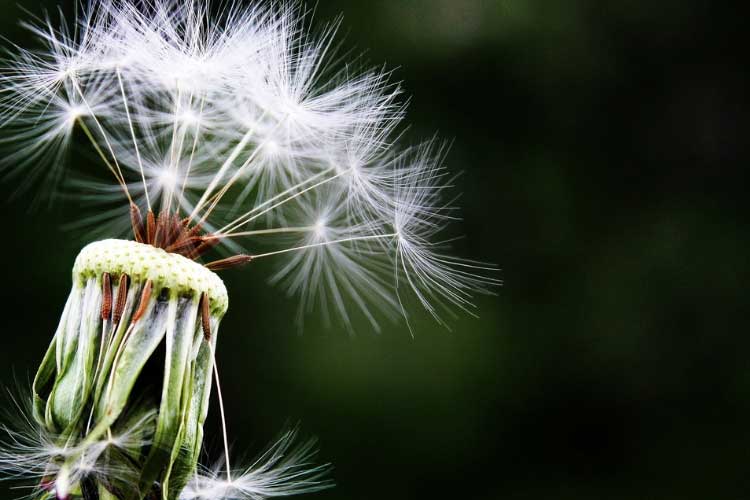This rhetorical question, which I get asked over and over again whenever I have the bad idea of letting someone put a toe in my garden, has the gift of twisting my nerves.
First of all, I can do what I want at home! (and I encourage you to do what you want at home too…)
Two: there is no such thing as a “weed”! At most, I can tolerate the more appropriate term “weed”. A weed is simply a plant that the gardener or farmer considers to be out of place. Example: a beet in a potato field.
Three: not only is this not the right term, but these wild plants have many uses that I will mention in this article.
“What is a weed but a plant whose virtues have not yet been found.”
Contents
- 1 1) It’s good for your stomach!
- 2 2) It’s good for your health
- 3 3) It’s good for your soil
- 4 4) It’s good for biodiversity
- 5 5) It’s good for your plants
- 6 6) It’s good for your back
- 7 7) It’s good for your nerves
- 8 8) It’s good for your wallet
- 9 9) It’s okay to pretend to be a Piet Outdolf landscaper
- 10 10) It’s good to get the land next door
- 11 Author
1) It’s good for your stomach!
Yes, you read that right! Some of them can be eaten and are even excellent: plantains (Plantago major and Plantago lanceolata), ground ivy (Glechoma hederacea), shaggy cardamine (Cardamine hirsuta), gouty grass (Aegopodium podagraria), chickweed (Stellaria media) and even dandelions (Taraxacum sp.) or nettles (Urtica sp.).
However, be careful to find out beforehand and to carefully determine the wild plants in your garden. Do not confuse Lily of the Valley with Bear’s garlic or Anthrisque with Hemlock… There are a lot of books on ethnobotany (the study of the relationship between man and plants), guided tours on the subject given by experts (well not always…), not to mention some of the more knowledgeable people around you who will be able to inform you… And yes! Nibbling what is lying around is in fashion these days, so it is a good time to study this particularly interesting subject. And anyway, if you have any doubts, don’t add this strange plant to your salad.
Plants are like mushrooms, when you don’t know…

2) It’s good for your health
Good old grandma’s remedies… Well, great-grandmother for people of my generation…
Many indigenous plants were used in the past to make ointments, herbal teas, syrups, … in short, all the remedies for the smallest aches and pains that did not require a visit from a doctor. Here too, the bibliography concerning these medicinal plants is abundant and I will only cite a few classic examples.
Bramble leaf tea to help start the winter and avoid small colds, elderberry syrup against coughs, Benoîte root for sore throats, … And even plantain can help you make a “boo-boo balm” to heal light burns and small wounds or to soothe insect bites or nettle stings.
Once again, do not start making potions, mixtures or simple herbal teas if you are not really sure that the plant you have picked is not a deadly poison.
3) It’s good for your soil
If a “weed” has grown somewhere in your garden, it must have had the opportunity. A vacant spot in a flowerbed or bed and boom, a “weed” appears. In reality, its role at this time is to avoid at all costs that the ground remains bare and thus participates in the preservation of your soil. A kind of occasional ground cover at a lower cost.
Some of them are also bio-indicators and can reveal a lot of clues about the quality of your soil: too much nitrogen, not enough nitrogen, lack of silica, too compact soil, …
4) It’s good for biodiversity
Everyone wants butterflies in their garden! But everyone also forgets that before being this pretty flying insect, the butterfly was first a caterpillar. But each species of butterfly feeds most of the time on only one plant species (for example: the borage for the lemon butterfly). Some plants are a bit like caterpillar “restaurants”: the nettle hosts about ten species (Vulcan, Day Peacock, Little Turtle, …), the bramble feeds five or six and the grasses complete the picture nicely. But if you systematically pull out the smallest fireweed that sticks out of the ground, don’t expect to meet this magnificent sphinx: the Fireweed Sphinx.
Most of our insects (especially pollinators) have coevolved with a specific plant. But if this plant is no longer present, the insect disappears… (and vice-versa for that matter!) If this insect disappears, the whole precarious balance of the food chain is in danger. If the balance is broken, other species (micro-mammals, other insects, spiders, birds, …) will disappear in turn from your garden, sometimes with important consequences, especially in the regulation of “pests”. This is unfortunately what happened in cultivated fields: a drop in biodiversity because of the systematic annihilation of everything that is not productive, hence the proliferation of pests or diseases, hence chemical treatments, hence a new reduction in biodiversity and so on… until death ensues… Fortunately, in the last few years, improvements in cultivation practices have been credited to farmers.
5) It’s good for your plants
1+1 = 3
This formula is not from me, nor from a famous mathematician but from… Didier Willery and even if I don’t share his immoderate love of variegated foliage, I have to admit that I fully agree with this idea.
Plants do not live independently of others. It is now known that there are positive or negative biochemical interactions between them: this is called allelopathy. In addition, roots help to aerate the soil around other plants and ectomycorrhizae (fungi living in symbiosis with most plants at the root level) help to provide the plant and those next to it with the nutrients they need to survive.
The latest research indicates that in addition to ectomycorrhizae, some microscopic and symbiotic fungi called endomycorrhizae contribute to the production of biochemical and often aromatic substances. These substances often repel plant pests such as aphids, caterpillars, …
Examples among many others: Lemon balm and Geranium herb.
6) It’s good for your back
Plants always grow too low on the ground… or maybe you are the one who is perched too high on your two legs. For me, it’s still okay with my frustrated verticality… But if you don’t pull them out anymore, you won’t have to bend down. But the intelligent gardener avoids unnecessary effort.

7) It’s good for your nerves
Always in the interest of safeguarding your fragile health. Close your eyes and imagine for a moment a “weed” in your splendid rose bed. This one, a mullein, pops up between two roses like a lighthouse staining this pastel pink tide with a pale yellow spot, ultimately insipid and without any real contrast. Thinking about it, sitting cross-legged and levitating, you say to yourself that it is not so serious. This plant also deserves to live and then this little touch of color finally brings a plus to your roses. All is well… Zen… (I’m also “zen a lot!”)
8) It’s good for your wallet
In addition to being bad for the planet, weed killers are expensive and I won’t even mention the ultra-sophisticated tools (like an old fork) that are sold to weed supposedly without effort. Letting a few weeds grow won’t make you richer but it won’t cost you anything. Unless the bindweed that you allowed to grow on your young Cornus florida plants costing a small fortune because some idiot in an article told you to let the “weeds” grow, finally finished them off… (The management of Promesse de Fleurs will send you the contact information of this idiot for possible retaliation).
9) It’s okay to pretend to be a Piet Outdolf landscaper
“Wow, but your flower meadow is really beautiful. What mix did you plant and where did you buy the grasses?”
“Uh, I just haven’t mowed that spot in three months…”
And yes, against all odds, nature proves to be a much better landscaper than you or I. She has the gift of placing colors in a perfect way, in a beautiful harmony. It’s as if everything falls right in the right place.
Moreover, a plant that came “by chance” to your home will always be more resistant and healthy than the ones you planted with love and delicacy. Yes, I know, nature is often cruel to the gardener…
“If you water it and it dies, it’s a plant. If you pull it out and it grows back, it’s a weed…”
If you add that they are totally free, then that’s even better and I… Ah, I’m told in the earpiece that I shouldn’t praise free plants because… we sell plants and that’s not good for business. But it doesn’t matter, we just have to do like the others: sell weeds.
10) It’s good to get the land next door
Just a guess… You let some dandelions go to seed in your lawn. The seeds germinate the following year in the garden next to yours.
Your neighbor has a strange phobia of the color yellow (I think we say “Xanthophobia”) following an overdose of pastis last summer, he can not therefore approach such a flower and intervene in its radical elimination.
He does not dare to go to his garden anymore and quickly falls into depression. He loses his job as a vegan sausage seller and Rex, his faithful companion, leaves him to embark on a career as a dog-policer in the movies. Mad with grief, your neighbor decides to abandon everything to live in the Tibetan monastery of Saint-Bruce Lee in Sologne. He is now called Bertrand Rinpoche and wears sandals and a saffron robe. The land is for sale. You can finally buy it to realize your dream: the plantation of an arboretum dedicated only to the genus Cornus.

In conclusion…
It is urgent to totally rethink your relationship with plants. We are not asking you to transform your garden into an industrial wasteland or a nature reserve (although… if you are tempted…) but “let go”, it will be excellent for your health as well as for that of your (our) planet. It is humanly impossible to control everything in your garden, we would need an army of gardeners and even so, it is always nature that will win. So let this little flower live its life, after all, it could perhaps give it back to you one day…









